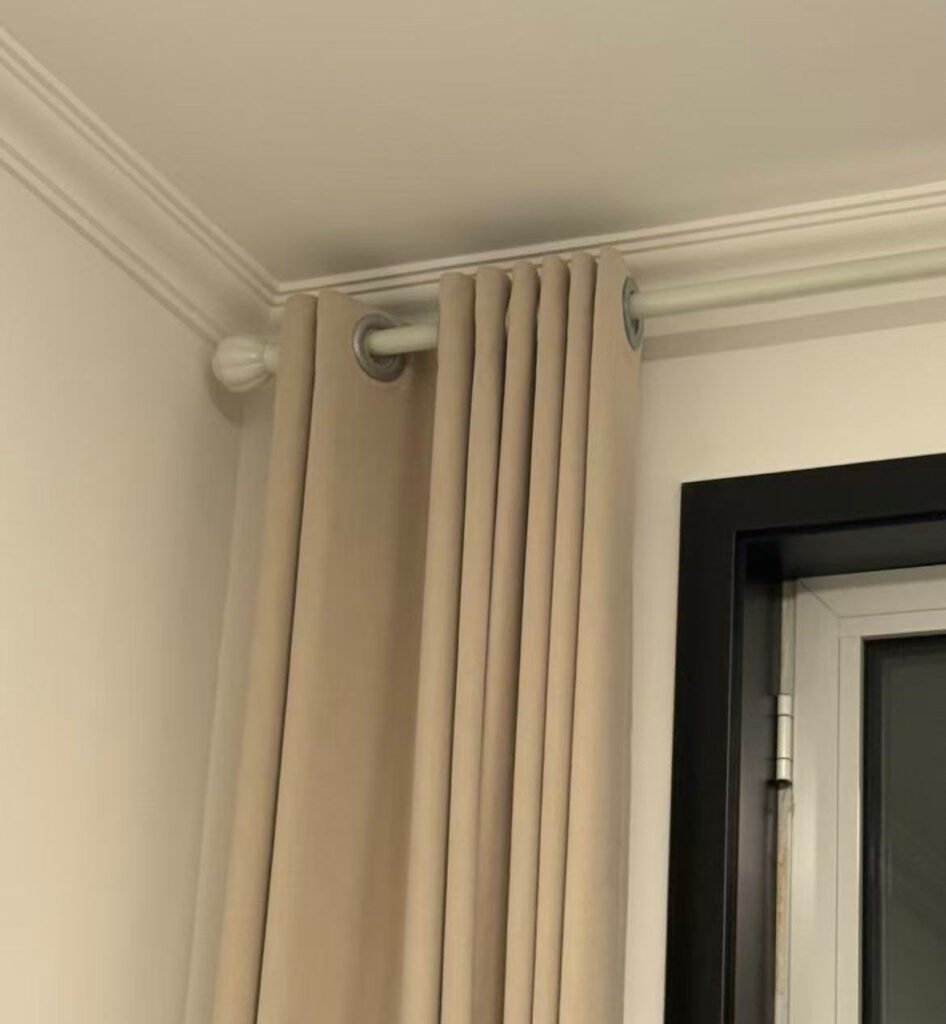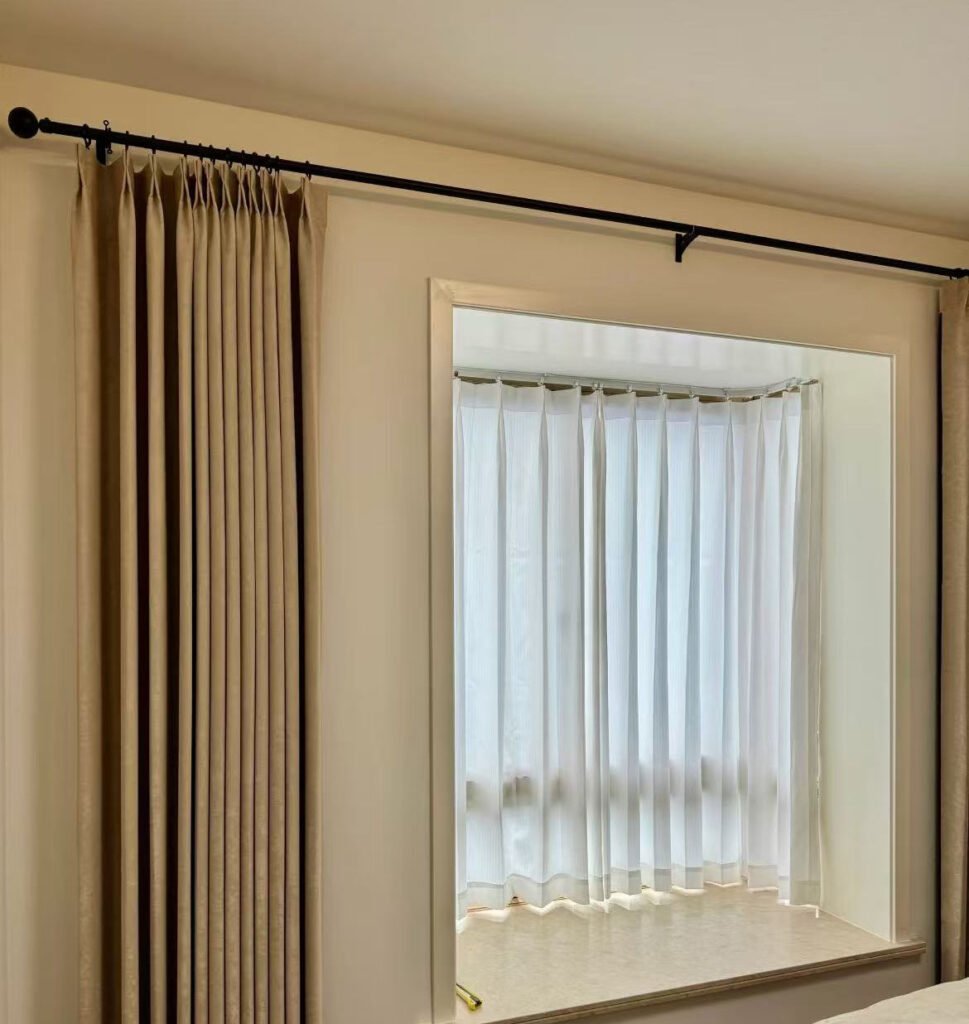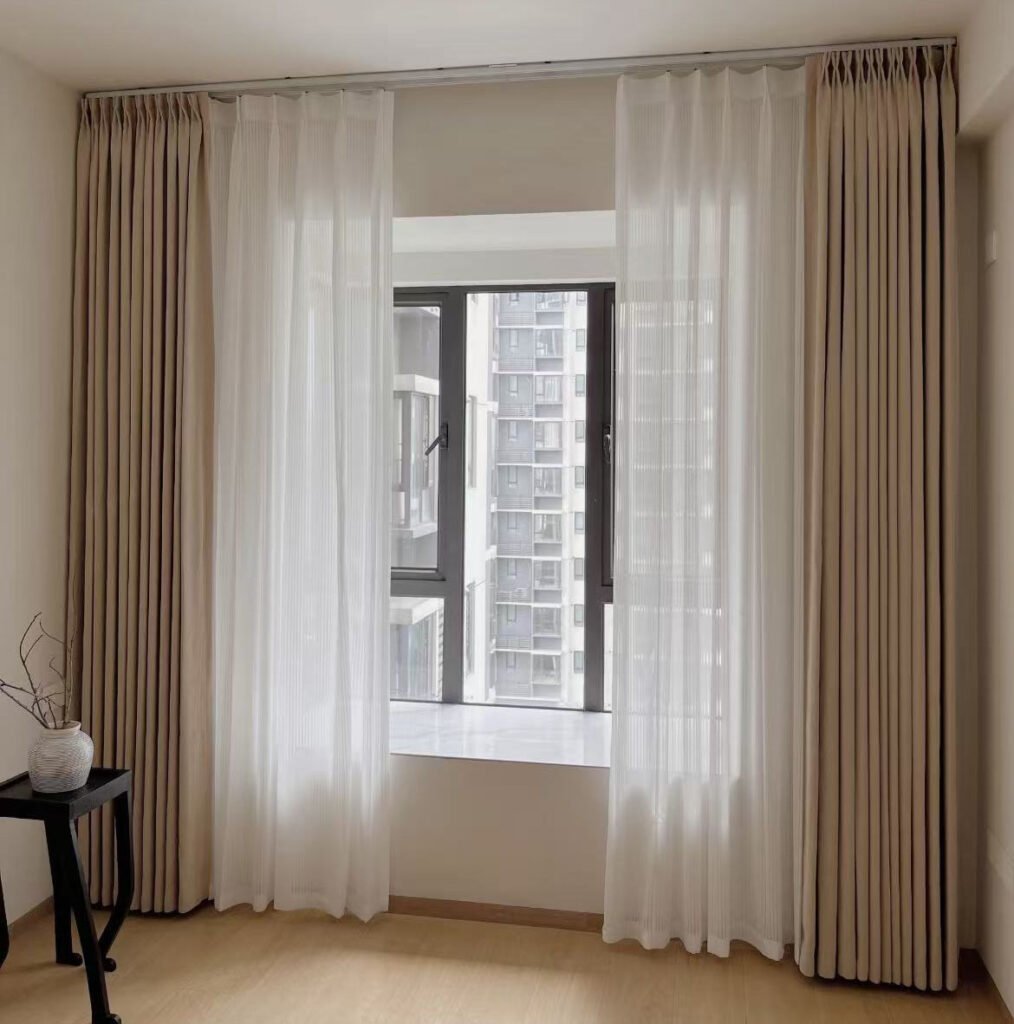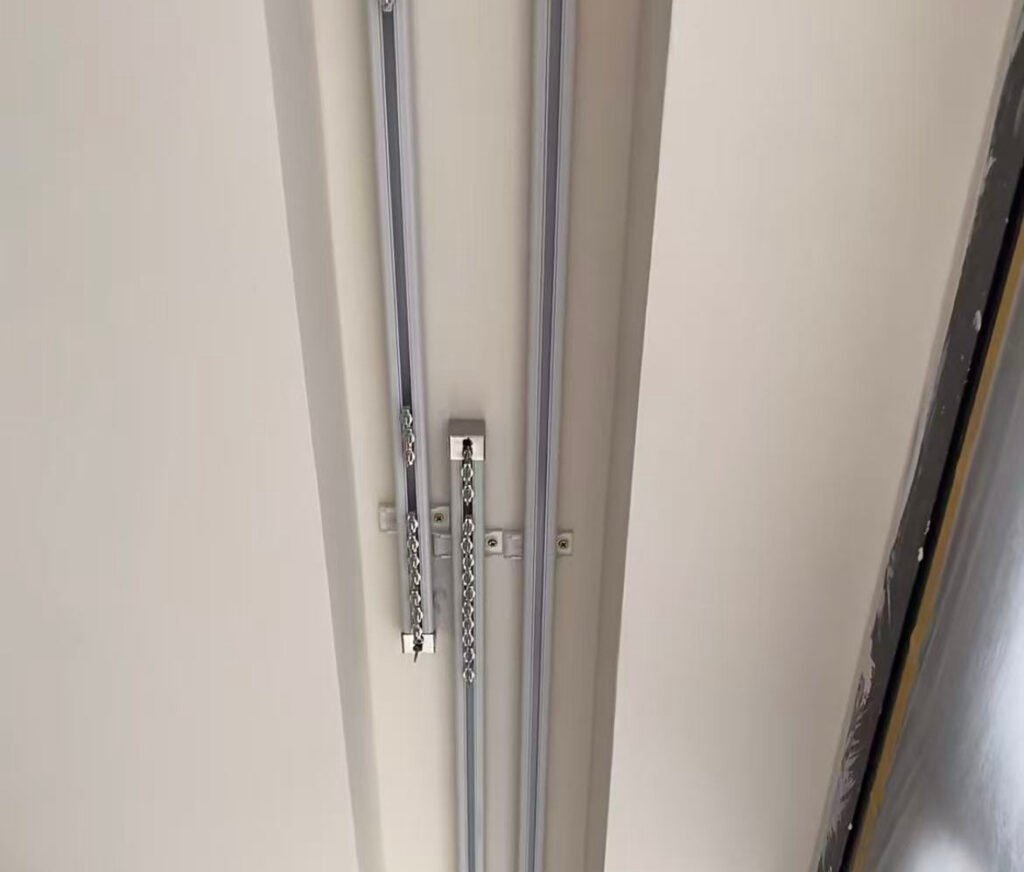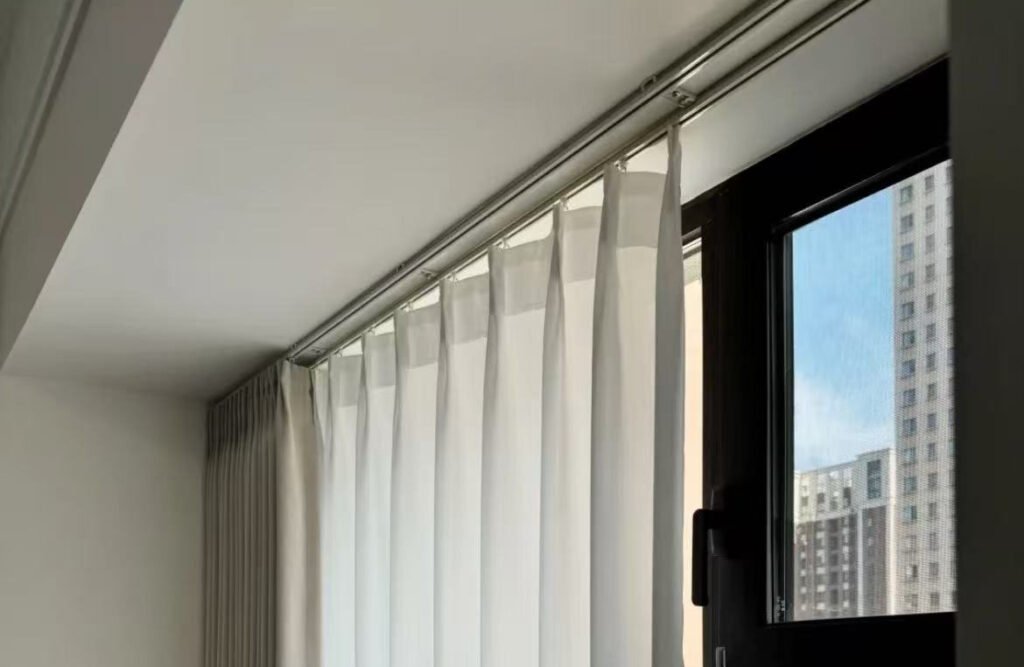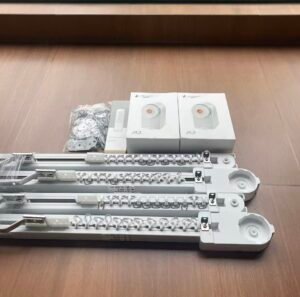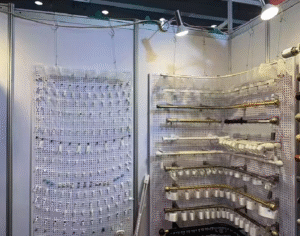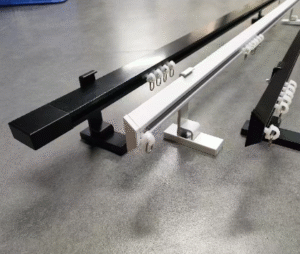Are you sourcing hardware for a large project and feeling unsure about specifying tracks or rods? The terms are often used interchangeably, but choosing the wrong one can compromise both the design and function.
The main difference is that curtains hang below a curtain rod using rings or tabs, making the rod a visible design element. In contrast, curtains hang from carriers that run inside a curtain track, which is often concealed to create a more functional, minimalist look.
From my years working with the raw materials on the factory floor, I learned that these two products are engineered for completely different purposes. A rod is designed to be seen; its material, finish, and finials are part of the room's decor. A track is all about performance—engineered for a perfect glide, for handling heavy fabrics, and for disappearing into the ceiling to let the architecture shine. For a purchasing manager, understanding this core distinction is the first step to sourcing the right product for the right project.
Which Looks Better: Curtain Rods or Tracks?
Are your designers pushing for a clean, modern aesthetic that traditional hardware just can't achieve? Bulky rods and ornate finials can often distract from a minimalist or high-end architectural design.
Whether rods or tracks look "better" depends on the design goal. Rods are decorative and suit traditional, rustic, or transitional styles. Tracks offer a minimalist, contemporary look by concealing the hardware, making them the preferred choice for modern, high-end hospitality and commercial interiors.
I've seen this debate play out in countless project specifications. A designer creating a cozy, traditional space will choose a beautiful wooden or bronze rod to add character. But for a luxury hotel with floor-to-ceiling windows, the goal is often an unobstructed view and a sense of seamlessness. In that case, we manufacture ceiling-recessed tracks that become completely invisible. The curtain appears to float from a clean line in the ceiling.
This allows the fabric and the view to be the stars of the show. So, the question isn't which is better, but which one better serves the designer's ultimate vision. For modern projects, that answer is almost always a track.
What Are the Functional Differences in How They Operate?
Are you concerned with the end-user experience, like a hotel guest struggling to close heavy blackout curtains? The mechanism for opening and closing curtains is a critical functional detail.
Functionally, curtain tracks offer a smoother, lower-friction operation. Their internal carriers or gliders are engineered to move effortlessly. Rods rely on rings sliding along a pole, which can snag, especially over long spans or with heavier curtains. Tracks are also far more versatile for motorization.
When we produce components, the difference in engineering is clear. The plastic gliders for a track are molded for minimal contact and smooth movement, often with silicone infusion. The extrusion of the aluminum track itself is designed to create a perfect channel for these gliders. For a curtain rod, the rings are a simpler design, and friction is inevitable. This functional superiority is why almost all motorized systems are built on a track-based design. The motor needs a reliable, low-friction path to operate quietly and effectively for years.
For any project where ease of use is a priority, the smooth, engineered glide of a track system is the only professional choice.
Which is Stronger for Heavy-Duty and Commercial Applications?
Do your projects involve heavy, layered, or acoustic-dampening curtains that require robust support? Specifying hardware that can't handle the load is a recipe for failure and costly replacements.
Curtain tracks are significantly stronger and better suited for heavy-duty applications. A commercial-grade aluminum track distributes weight across multiple ceiling or wall-mounted brackets, preventing sagging. Most decorative rods are not engineered to support the substantial weight of commercial fabrics over wide spans.
I’ve overseen the load testing on our commercial track profiles, and the results are definitive. A properly installed heavy-duty track can support impressive weight loads, making it the standard for theaters, conference centers, and hotel suites with blackout layers. The strength comes from two places: the aluminum profile's engineered shape and the ability to add as many support brackets as needed.
A curtain rod, on the other hand, is limited by the strength of the pole itself and usually only has a bracket at each end and one in the center. Over a wide window, this will inevitably lead to sagging under heavy loads. For any application where the curtains are heavy and the spans are wide, a track system isn't just a better option—it's the required solution for safety and durability.
Which is More Cost-Effective for Large Projects?
Are you trying to balance a tight budget with the need for high-quality, durable hardware for a multi-room installation? The total cost of ownership goes beyond the initial price per meter.
For large projects, curtain tracks are often more cost-effective. While the per-unit price can be similar, tracks require less maintenance, offer greater durability, and their versatility for custom bends and long spans reduces the need for expensive, specialized hardware, lowering the total project cost.
As a manufacturer, I see the economics from the inside. Creating a high-quality decorative rod with perfect finishes and ornate finials can be very labor-intensive. Aluminum tracks, however, are produced through an efficient extrusion process. When a hotel needs to outfit 200 rooms, the reliability and longevity of a track system mean fewer service calls and replacements.
Here’s a quick cost consideration table for a large project:
| Cost Factor | Curtain Rods | Curtain Tracks |
|---|---|---|
| Initial Hardware | Variable; high-end can be expensive. | Highly competitive, especially at volume. |
| Customization | Very expensive for bends or long spans. | Simple and cost-effective to curve. |
| Maintenance | Higher; rings can break, finish can wear. | Lower; gliders are durable and easy to replace. |
| Longevity1 | Can sag under heavy, continuous use. | Engineered for long-term commercial use2. |
When you look at the total cost over a 10-year lifespan, the durability and lower maintenance needs of a track system present a much better value proposition for any commercial buyer.
Conclusion
In essence, rods are decorative furniture for your windows, while tracks are engineered systems for performance. Understanding this difference is key to sourcing the right solution for your clients' needs.
